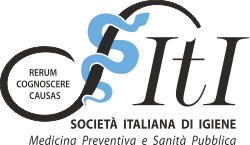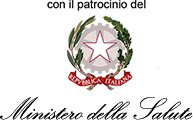Herpes Zoster (HZ), also known as shingles, is a common and debilitating disease caused by reactivation of the Varicella Zoster virus (VZV). Varicella is generally contracted during childhood.
Following primary infection, which manifests as varicella (chicken pox), the virus becomes latent in the cranial and spinal cord sensory ganglia, and, especially with advancing age (in particular after the age of 50) and/or if cell-mediated immune response is reduced, can be reactivated giving rise to nerve and skin manifestations with the dermatomal distribution typical of HZ. The most frequent location of HZ is on the thorax, causing a rash and neuralgia. The form involving the ophthalmic branch of the trigeminal nerve, often referred to as ophthalmic HZ, accounts for 10-20% of HZ cases. Almost half of these subsequently give rise to ocular complications, such as neurotrophic keratitis. The most frequent complication of HZ is post-herpetic neuralgia: a neuropathic syndrome, which occurs or lasts for at least 3 months after the onset of rash or acute pain from HZ. About 90% of patients with HZ are immunocompetent. HZ, unlike chickenpox, does not have a seasonal or epidemic pattern in its spread. Several studies suggest that in addition to age, medical conditions such as diabetes, major depression, stressful life events, immunosuppressive treatments, may increase the risk of HZ, as they can reduce the cell-mediated response to the virus.
The incidence of HZ is similar throughout the world and correlates with the age of the population: from 2-3/1,000 people per year between the ages of 20 and 50 to 5/1,000 in the sixth decade of life, 6-7/1,000 in the seventh-eighth decades, and a peak in subjects of 75-79 years of age. In the United States, Canada and Europe the estimated annual incidence is 3-4 cases per 1,000 person-years. With the rise in the elderly and fragile population, an increase in HZ cases is expected in the near future. On average about one person in 4 develops HZ over the course of their lives and the disease affects about half of those who reach 85 years of age. In general, HZ occurs only once in an individual's life, although it is possible that even immunocompetent individuals may suffer from multiple episodes of HZ with a recurrence rate ranging from 1.5 to 12.5%.
Mechanism of action and effectiveness
The vaccine contains an attenuated form of the varicella-zoster virus which triggers the immune system to act specifically against the virus. As a result, the vaccine helps to control the reactivation and replication of the virus within the body, thus preventing the development of herpes zoster and Post Herpetic Neuralgia (PHN).
This vaccine has shown protective efficacy against HZ of between 51% and 70% in various clinical studies. The protective efficacy of this vaccine against PHN was 67%. With reference only to subjects who had developed HZ, a reduction in the risk of subsequently developing PHN was observed. This effect was more evident in the group of older subjects (≥70 years of age), in which the risk of developing PHN following zoster was reduced to 10% in the group of vaccinated subjects compared to 19% in the group of subjects who had received the placebo.
When to vaccinate
In Europe, the Zoster vaccine has been approved for use in adults aged 50 and over for the prevention of herpes zoster and post-herpetic neuralgia. The vaccine can also be used in people who do not have anti-VZV antibodies and who have a negative history of chickenpox and in those who have already experienced shingles. The zoster vaccine is administered subcutaneously in a single 0.65 ml dose, preferably in the deltoid region. The need for a second dose is not currently known. This vaccine can be co-administered with the inactivated influenza vaccine, with separate injections and at different injection sites. Zoster vaccine should not be co-administered with 23-valent polysaccharide pneumococcal vaccine, due to a possible reduction of immunogenicity. No data are currently available on concomitant administration with other vaccines.
Who should not be vaccinated
This vaccine is not indicated for the prevention of primary varicella infection and should not be used in children and adolescents. Anyone with a history of significant hypersensitivity to any component of the vaccine (active ingredient, excipients or traces of residues, such as neomycin) should not receive Zoster vaccination. Neomycin allergy generally manifests as contact dermatitis. However, a history of contact dermatitis due to neomycin is not a contraindication to vaccination with live virus vaccines.
In addition, anti-Zoster vaccination is contraindicated in individuals who have one of the following conditions:
- Primary and acquired immunodeficiency states due to acute or chronic leukaemia, lymphoma or other pathologies affecting the bone marrow or the lymphatic system, immunosuppression due to HIV/AIDS, cellular immunodeficiency.
- Ongoing immunosuppressive therapy (including high-dose corticosteroids). The use of this vaccine is not contraindicated in individuals receiving topical/inhaled corticosteroids or low-dose systemic corticosteroids, or in patients receiving corticosteroids as replacement therapy, e.g. for adrenal insufficiency.
- Untreated active tuberculosis.
- Pregnancy. In fact, since there are no studies on pregnant women, it is not currently possible to evaluate the safety profile for these women. It is not known, in fact, if this vaccine could cause foetal damage or if it could affect reproductive ability. However, it is known that natural VZV infection can sometimes cause foetal damage. In any case, pregnancy must be avoided in the first month following vaccination. This vaccine, however, is not intended to be administered to pregnant women as the product is not indicated in subjects under the age of 50.
When to postpone vaccination
In presenza di rialzo febbrile è opportuno valutare la possibilità di posticipare la vaccinazione.
Vaccination risks
The safety of the zoster vaccine has been studied in clinical trials conducted on more than 32,000 people, in particular, in the Adversity Event Monitoring sub-study, a subgroup of individuals (3,345 receiving the vaccine and 3,271 receiving the placebo), part of the Shingles Prevention Study (SPS) - the largest of the clinical trials carried out on the HZ vaccine. In addition to routine safety monitoring, which was performed for the duration of the study, a vaccination book was also given to record adverse events that could occur between day 0 and day 42 following vaccination. The most common adverse reactions reported more frequently in those given the vaccine (in more than 10% of cases) were injection site reactions (erythema, swelling, itching, tenderness, sometimes bruising or hardening), headache and pain in the extremities (in more than 1% of cases). Most of these reactions were reported as mild in intensity. Additional adverse events were reported spontaneously in post-marketing surveillance, including arthralgia, myalgia, rash, nausea, lymphadenopathy and hypersensitivity reactions. For these events it was not possible to estimate the frequency or establish a causal relationship with the use of the vaccine, as they referred to a population of unknown size. Similar results were shown by the ZEST study (Zostavax Effective and Safety Trial) conducted in subjects aged 50 to 59 years. Only one serious adverse reaction (anaphylactic reaction) was reported in a vaccinated subject during this study.
This, like any other drug, it is possible that vaccination can cause serious damage, such as a severe allergic reaction, but this is usually very rare. No transmission of the vaccine virus has been reported in clinical studies. However, post-marketing experience with varicella vaccines suggests that there is a theoretical risk of transmitting the attenuated vaccine virus from a vaccinated subject to a susceptible subject (albeit a very rare eventuality). This risk must be weighed against the risk of developing natural HZ and potentially transmitting the wild VZV strain to a susceptible individual. As with all other vaccines, the HZ vaccine will continue to be monitored over time, and any problems, including unusual or serious ones will be reported.



